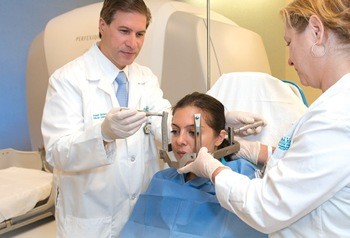- PATIENT FORMS | REQUEST A CONSULTATION | CONTACT US
- 1-844-NSPC-DOC
Glossopharyngeal Neuralgia Treatment Options with NSPC’s Dr. Michael Brisman

Treating More Than Malignancies: The Many Benefits Of Gamma Knife Radiosurgery At South Nassau Communities Hospital
December 15, 2014
Acoustic Neuromas: Dr. Michael Brisman
January 2, 2015What Is Glossopharyngeal Neuralgia?
Glossopharyngeal Neuralgia is a condition causing severe pain in the deep throat, tonsil, or deep ear areas. Pains are sharp, severe, brief, and episodic. People often say that the pains feel like electric shocks, and they can be triggered by swallowing, coughing, and sensations in the deep ear. Some patients may experience spontaneous remissions, where the pains go away for weeks, months, or even years. Others require treatment.
Glossopharyngeal Neuralgia Causes and Diagnosis
Glossopharyngeal neuralgia is rare, and proper diagnosis is critical. Diagnosis involves an MRI to rule out the presence of a mass or growth that is pressing against either the 9th or 10th cranial nerve. The condition is usually caused by a blood vessel pressing against either cranial nerve, and this blood vessel shows up on certain MRIs as well.
First-Line Glossopharyngeal Neuralgia Treatment
There are several effective glossopharyngeal neuralgia treatments. Anti-seizure medication, especially Tegretol and Trileptal, usually provide effective pain relief. Less often, we use neurontin and Lyrica to treat glossopharyngeal neuralgia pain. If patients do not respond to these medications, we may consider other procedures.
A Low-Risk Operation
Glossopharyngeal neuralgia treatment may involve a very effective, low-risk operation under general anesthesia. We make a small incision behind the ear, remove a small amount of skull bone, and explore the 9th and 10th cranial nerves using a microscope. From there, we may move the blood vessel away from the nerve, if needed, and insert a sponge between the blood vessel and nerve. If we do not find a blood vessel, then we will usually cut the 9th nerve and the upper fibers of the 10th nerve.
Nerve Injury As A Glossopharyngeal Neuralgia Treatment
We may also choose to injure the nerve using a super-focused radiation procedure or Gamma Knife Stereotactic Radiosurgery. This is an out-patient procedure that involves radiation on the 9th and 10th cranial nerve roots. This nerve injury procedure is less invasive, although patients may still need to use some medication for ongoing pain relief after the procedure.
We used to perform a different type of nerve injury involving insertion of a needle through the cheek and threading it through the nerve. However, it was difficult to selectively injure the sensory portion of the 10th nerve, and not the motor portion, which is important for maintaining swallowing and vocal function.
In summary, there are several effective glossopharyngeal neuralgia treatments, including the open procedure and the Gamma Knife procedure.
